4 Best No-Pull Dog Harnesses to Stop Pulling on Leash
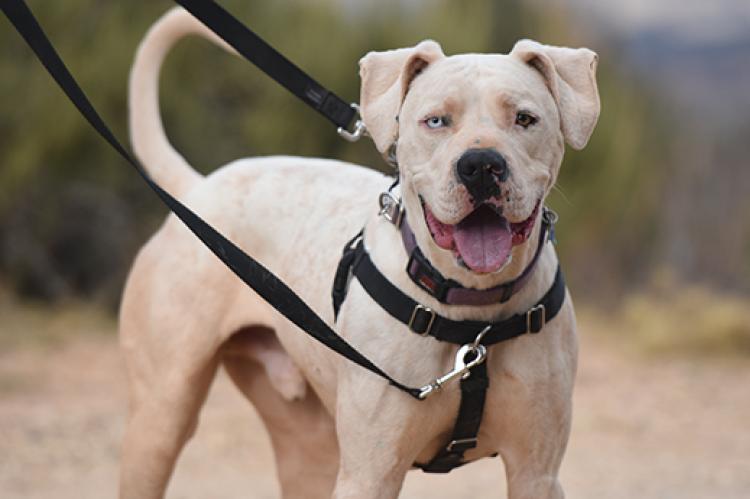
If your dog is pulling on leash, you can utilize training as well as adding a no-pull dog harness, Halti, or Gentle Leader.
Leash-pulling is not only annoying and potentially dangerous for the person, but it also can be harmful to the dog. Dogs can sustain injuries to their spine, front legs, and more from forceful pulling on leash; wearing a harness can help prevent those problems.
Front-clip dog harness
With the leash connecting at the chest (rather than at the neck), front-clip dog harnesses work by having leash pressure direct the dog to the side instead of allowing them to lean into the harness and pull forward. Front-clip harnesses come in a variety of sizes and fit most dogs. Fit is important with this type of harness, so make sure you follow the manufacturer’s instructions when selecting and sizing.
The downside to this type of no-pull dog harness is that it can cause chafing and may be difficult to fit correctly on some body types. The PetSafe Easy Walk and the Ruffwear Front Range harnesses are examples of front-clip harnesses that we recommend.
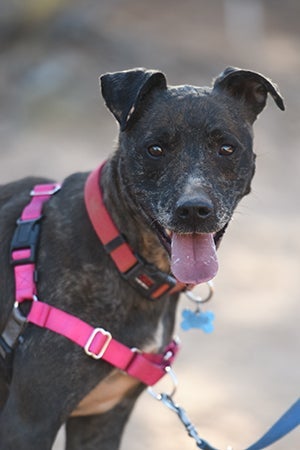
Around-the-torso harness
Harnesses that wrap around the chest or under the front legs and clip at the dog’s back can also be helpful when teaching a dog to walk on a loose leash. These harnesses give some control over the dog pulling forward and are useful for dogs with neck or back issues because they don’t apply any pressure to the neck or spine.
These harnesses work well with many shapes and sizes of dogs. Also, because the leash is clipped above the dog’s body, it’s hard for the dog to chew on it, and it doesn’t easily tangle under their legs. The Sporn harness is an example of an around-the-torso harness.
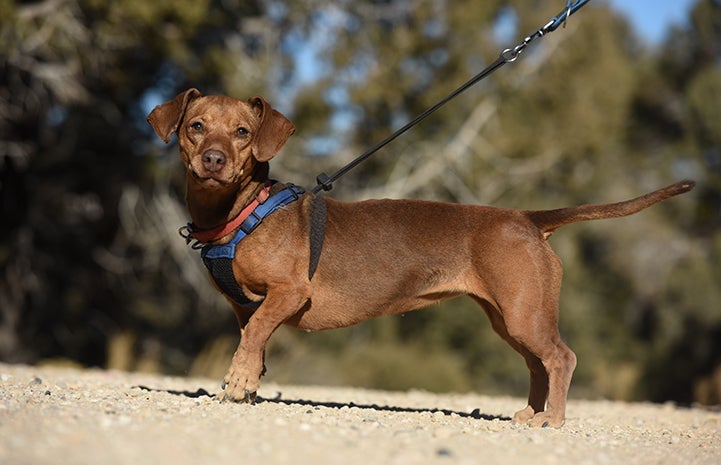
Combo harness
If you have a dog who pulls really hard, you might want to try a combo harness, which combines a front-clip harness with one that wraps around the dog’s body. When you use it with a double-ended leash (with clips at each end) and a handle that allows the leash pressure to float between the clips, you can alternate pressure between the front clip and back clip — or put some pressure on both.
This arrangement also keeps the leash short and less likely to get tangled up in a dog’s legs. This type of harness fits great on dogs with deep chests. One example is the 2 Hounds Design Freedom Harness, which is sold with or without the double-ended leash.
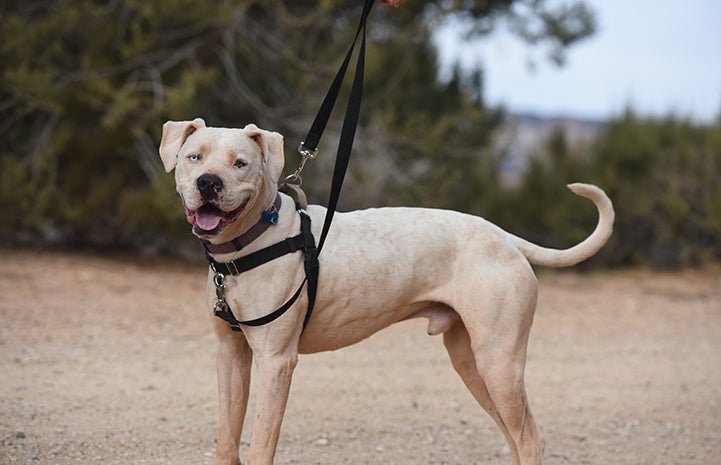
Head halter
A head halter (aka head collar or head harness) goes around the dog’s muzzle and clips behind the dog’s ears. To some people, it looks like a muzzle, but it’s not because it does not restrict a dog’s ability to open their mouth. When teaching dogs not to pull on leash, head harnesses can be useful tools. But they do require some additional training to get the dog comfortable with wearing the harness.
If fitted and used correctly, a head halter employs gentle leash pressure to direct the dog’s head to the side, which can encourage the dog’s body to follow. It’s important to employ training with these tools. If a dog continues to pull wearing a head halter, they will feel constant pressure and be uncomfortable, making it difficult to acclimate them to wearing it. We recommend the PetSafe Gentle Leader and the Halti Headcollar.
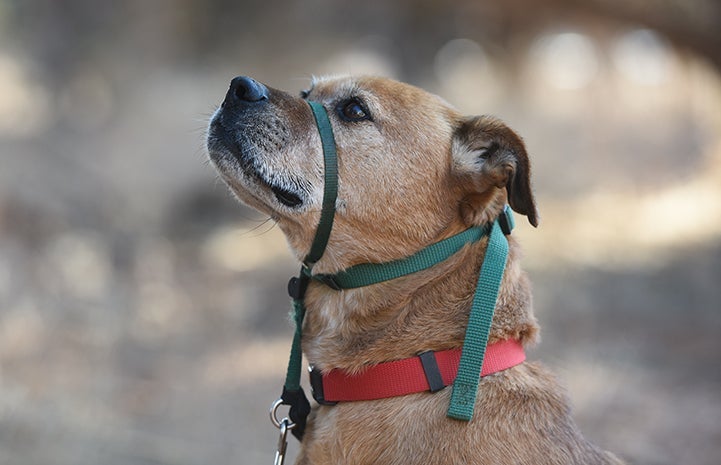
Training dogs to stop pulling on leash
While each of these types of no-pull dog harnesses can assist you with teaching your dog to walk on a loose leash, they won’t stop the dog from pulling without some training. There are various training methods to try that allow you to build your relationship with your dog and get the behavior you want from them. A professional dog trainer should be able to help you with an individualized plan for your dog.
With a little time, patience, and practice, you will find that your dog gets the picture, and you can enjoy your walks together, whether it’s a leisurely stroll around the neighborhood or a brisk hike in the woods. Eventually, the words “Let’s go for a walk!” will conjure images of calm, not chaos.